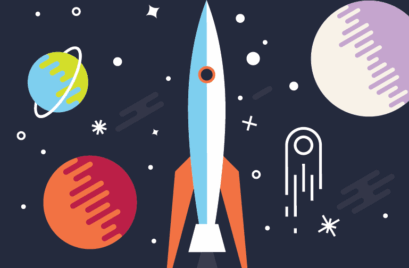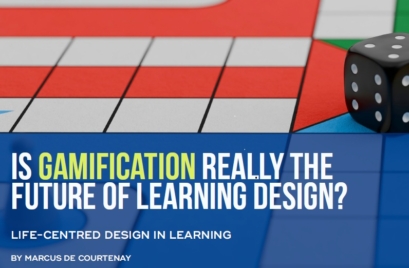
While AI is being used to uncover patterns and make predictions in organisations, it’s also increasingly making managerial decisions. And this trend appears to be accelerating with the emergence of generative AI tools like ChatGPT, which is writing ever larger shares of our reports, presentations, and soon our emails.
But what does this mean for leadership? Will we need less leadership in the future? At its most pronounced, algorithmic management can replace humans in not just analytics and planning but in leadership roles entirely. For example, Amazon drivers have their work planned for them by algorithms, are tracked automatically by GPS, and some have been fired in the past through automated emails if they fall behind their daily quota. In this kind of situation, it’s easy to imagine human connection getting squeezed out of many of our organisational interactions, making our work increasingly meaningless.
But what if the opposite were also true? What if AI can help us inject more, not less, humanity into our leadership? Through emerging examples of creative uses of generative AI tools, we believe this could be possible.
Below, we explore some use cases that could enable leaders to be more compassionate, more present, and more adaptive to the needs of their team members.
Stress Testing Ideas
Given sufficient direction, ChatGPT can play the roles of colleagues who will debate your big ideas before you present them. Take, for example, the Dean of Students at NYU Stern School of Business, Conor Grennan who shows us exactly how he used it to progress a discussion:
Step 1
Tell ChatGPT to: “Play 4 roles for me: Be my company’s CEO, CMO, CTO, and CFO. (Describe each person – Technical? Fiscally conservative? Passive aggressive?) Probe the following idea for weaknesses.”
Step 2
Tell ChatGPT: “Now become a smarter version of all those executives and give counterarguments as to why my idea is brilliant.”
- Invite historical guests!
- Ask Steve Jobs to make a case for your idea!
- Or Einstein!
In this instance, Chat GPT is giving us feedback from the point of view of a debating partner, researcher, and analyst all in a matter of seconds. We just need to know how to ask the right questions in the right order.
Learning From and Integrating Diverse Perspectives
Embedded in Grennan’s example is an opportunity for us to learn from different perspectives. ChatGPT can provide us with information and insights on the topic or issue we’re discussing and quickly uncover the diverse perspectives that may sit around this. This then provides a broader lens on the different ways in which an issue could be interpreted and the different values at play to illuminate potential blind spots and gaps in our thinking. We can take in the perspectives of many different ‘humans’ at once.
Honing Communication to Express Empathy, Compassion, and Inclusion
But Generative AI doesn’t just offer us quick comparative information. We can also use it to help us manage human behavioural matters and support our leadership capabilities. For instance:
Checking our tone
We’ve all experienced receiving a brusque email, or an abruptly written directive. We may have even penned a couple ourselves, often unintentionally or in haste. Well, ChatGPT can be used to check the tone of our messages and suggest alternate phrasings that integrate inclusive and more empathetic language.
Preparing for difficult conversations
AI can act as a trusted confidant when preparing for difficult conversations that require empathy and understanding another person’s perspective. For example, you could ask ChatGPT this:
I need to have a conversation about my team member’s performance with them. They are highly capable but openly admit that they don’t put the effort in that they could. What are the strategies I can use to uncover more about them, and what could intrinsically motivate them to put more effort in?
Follow up questions might be:
How can I do this with compassion and empathy?
What can I do if they react defensively?
Offering positive reinforcement
Leadership can be a lonely endeavour and carries an expectation that we can be everything to everyone, with little positive feedback to nourish our own needs. AI can support leaders by supplying us with appreciative and compassionate self-talk. For example, you could say to Chat GPT: “I’m having a hard day as a leader of a team in a fast-paced environment, and I need a little pep talk. Can you give me a few positive affirmations?”
What these examples have in common is that they require us to engage with ChatGPT in a particular way: through detailed, conversational questions. This differs from how we have been conditioned to type questions into Google search for the past two decades.
So, to amplify our empathetic and human leadership using AI, we need to treat the AI itself like a human, asking questions of it as we would a trusted friend. And as with many human-to-human conversations, we will find that the starting point matters less than our follow up questions.
Need More Help?
Keen to find out more about how you can leverage generative AI to support the human elements of leadership? Performance Frontiers work with clients to explore a range of dimensions within this emerging tech shift and what they mean for how we work – and even ‘who’ we are at work. Speak to Chris about how we can support you today.








